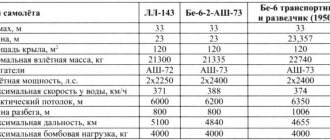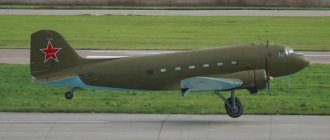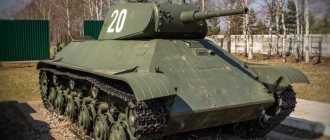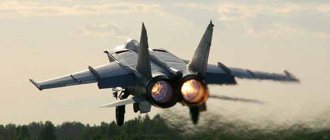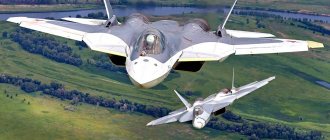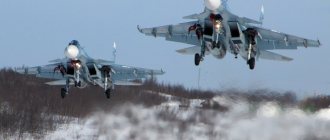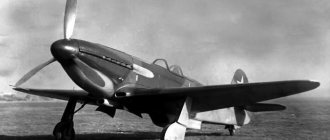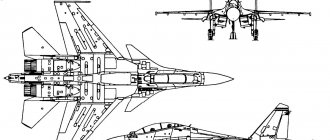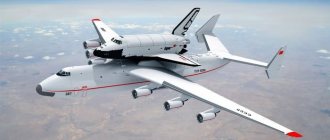An aircraft that has a huge number of nicknames and has become the hero of jokes, Khrushchev’s favorite is the AN-2, also known as the “maize plant”, “foal”, “flying bookcase”, “Annushka”... Created by the brilliant Soviet aircraft designer Oleg Antonov, the AN-2 aircraft even found a place in the Guinness Book of Records as the longest-produced serial aircraft (more than 6 decades). This is the smallest transport aircraft in the USSR, however, it is the largest among aircraft - biplanes. The design solutions used in its creation made this machine very durable and multifunctional. Before the AN-3 aircraft was put into operation, the Kukuruznik was considered the lightest single-engine aircraft in Soviet aviation.
Legendary maize truck AN-2
Manufacturer
For the production of a new aircraft in the USSR with the designation AN 2, the Kiev Aviation Plant No. 473 was allocated, which at the time the first series of the maize plant was launched into assembly was a low-power aircraft repair enterprise. However, with the support of the USSR government and Khrushchev personally, Kiev was able to put the production of the new product on stream. At the Moscow region machine-building plant in the city of Dolgoprudny, a modified An-2M was produced (parts for assembly were also supplied from Kyiv). In 1958, the right to produce the AN 2 as the most suitable small aircraft was transferred to Poland (as part of the CMEA agreement). Antonov biplanes began to be produced at the WSK PZL plant in the city of Mielec. All work was carried out under the supervision of Soviet specialists.
Two years earlier, mass production of the “corn maker” began in China at a state-owned plant in Nanchang, and was then transferred to the Shijiazhuang Aviation Corporation. The Chinese version of the aircraft is no longer designated AN2, but Shijiazhuang U-5; several dozen of them are produced per year.
Both Polish and Chinese production AN-2s had their own markings.
Chinese analogue of the famous AN-2
Application
The first production An-2s began to arrive at the geological services of the USSR, as well as at the Ministry of Internal Affairs and the Border Troops. Then it was the turn of DOSAAF and flight schools, where the machine began to be used as an educational and training vehicle. It was at this time that the aircraft received the nickname “Annushka”, which was used on a par with “Corn Man”.
In the first half of the 50s, aircraft began to arrive at Polar Aviation. The planes took part in the construction of the Mirny station and also transported various cargoes. In Antarctica, one of the An-2s made a controlled landing on the top of an iceberg. At the same time, the machines were used in agriculture and for air transportation.
By 1963, Aeroflot had more than 300 An-2P aircraft on its list. Despite the small size of the aircraft, by 1987 they carried more than 370 million passengers.
The vehicle's combat career has no bright pages. It was used to a limited extent in Vietnam, Laos, Afghanistan and a number of other countries for the delivery of passengers and cargo. After the collapse of the USSR, they were used in armed conflicts that arose in the former republics.
The collapse of the Soviet Union dealt a significant blow to the An-2 aircraft, as the number of flight accidents increased sharply. The reasons also lie in the decline in the quality of spare parts and decreased control over the condition of the vehicle fleet. But the remaining aircraft continue to be used for cultivating fields, as well as for training paratroopers.
To replace the An-2, several promising aircraft equipped with a turboprop power plant have been developed. At the same time, the design continues to be based on the fuselage and biplane box of the Antonov aircraft. Several dozen aircraft have been built and are actively used on domestic routes.
Date of release and modification
Aircraft CRJ 200
The chronicle of the AN aircraft begins even before the war, at the beginning of the 40s of the last century, when Antonov received the task of creating an aircraft of a simple design to solve primarily agricultural problems (pest control for crops), similar to German biplanes, designed to replace the outdated lightweight PO-2. He had to perform other military transport work as well. Requirements were put forward for the capabilities of the new machine: to land and take off from any surface, be it soil or even forest clearings. In terms of technical operation, such an aircraft should have been simpler than expensive helicopters and also unpretentious in terms of maintenance and operating conditions. Due to the war, the start of development had to be postponed until 1946. The AN2 made its first test flight in 1947, covering 3 thousand kilometers.
The aircraft has many modifications that allow it to perform work in different areas and climatic conditions:
- An-2C – ambulance transportation;
- An-2SKh - for agricultural tasks (mainly spraying crops against pests, for which it received the nickname “corn farmer”);
- An-2T – transport transportation (capable of taking on board about a ton of cargo);
- An-2TP – transports both cargo and passengers;
- An-2TD – designed for landing troops, as well as civilian paratroopers (with a retractable platform);
- An-2F - equipped for aerial photography, also conducts artillery reconnaissance at night, equipped with a cabin for a navigator in the tail, the engine and cabin are covered with an outer layer of armor;
- An-4 - an aircraft with the ability to splashdown;
- An-6 – carries out meteorological reconnaissance;
- An-2 – for cartographic surveys (with built-in cameras);
- An-2 – for radiation (with an X-ray meter) and geological exploration (with a magnetometer);
- An-2 – for rescue operations (with a hatch in the floor and a rail trolley);
- An-2L - for extinguishing forest fires (with containers for fire extinguishing mixtures);
- An-2M - for agricultural work with a long fuselage;
- An-2P - for transporting passengers;
- An-2S sanitary - can take on board 6 bedridden patients (there are special stretchers) and 2 accompanying persons, equipped with a thermal insulation system, a first aid kit and a toilet;
- An-2E ekranoplan;
- An-2PK – for work in polar conditions (equipped with a ski chassis and additional heating capabilities).
Over the entire production period, more than 18,000 copies of the AN2 aircraft were assembled; they performed their tasks in several dozen countries.
Modifications
The first series of aircraft were produced in cargo or agricultural versions, and only in 1957 did passenger versions appear. The An-2T transport, capable of carrying cargo weighing 1,500 kg, became the base model. On its basis, the transport and passenger version of the An-2TP and the landing vehicle An-2TD were developed.
The difference between the aircraft for paratroopers was the alarm system and cables for connecting the parachute cords. Both versions had a capacity of up to 10 people. The An-2SKh agricultural aircraft began to be produced in 1952. The fertilizer container was located in a special bunker installed in the cargo compartment.
In 1947, on the basis of the An-2, a military night reconnaissance aircraft was developed, which was equipped with an original tail section. It housed a frame cabin for the navigator, and the tail unit became double-finned. The armament consisted of a 20 mm B-20 cannon, and a bomb load weighing up to 400 kg was allowed. The cockpit had armor with a plate thickness of 4-12 mm. A prototype was built and tested in 1949-50.
For operation in coastal sea areas, as well as on rivers and lakes, a version of the An-2B seaplane was created. The car made it possible to transport cargo weighing up to 1000 kg or up to 9 passengers. The aircraft was also used for reconnaissance of schools of fish, the boundaries of ice fields, etc. Due to the specific application, the motor is equipped with a propeller with the ability to reverse thrust. The wheeled chassis was removed and two floats of an interchangeable design were installed instead.
The floats have an all-metal structure with aluminum casing. On the back of the float there are planes of water rudders, which are connected to the pneumatic system of the aircraft. The use of long floats required changes in the design of the landing gear struts and struts.
Seaplanes did not last long in service, as mass production of helicopters began, which replaced the An-2 biplanes.
To localize forest and steppe fires, a fire modification of the An-2 aircraft was created on the basis of a seaplane. Fire-fighting equipment is installed outside the cargo compartment of the vehicle, which increases versatility. The supply of water for extinguishing is placed inside the floats (up to 630 liters in each with a minimum filling). Filling is done by opening the doors while the vehicle is accelerating before takeoff. Additionally, containers with sulfanol are installed on board, which improves the extinguishing characteristics of water.
The most large-scale version was the modernized agricultural version of the An-2M, designed for chemical treatment of farmland and forests. The design of the machine allows for quick conversion into a transport or passenger version. Due to the increased weight, the vehicles were supplied only with an AB-2 type propeller and had a horizontal tail unit with an increased area.
Adjustments have also been made to the landing gear design, ensuring increased stability of the aircraft. The machine is equipped with a power take-off box connected to the rear of the power unit by a transmission shaft. The cockpit canopy has been changed and now has an entrance door on the left side. On the An-2M, a climate control system with air conditioning was used, which served only the cockpit. Because of this, a sealed door was introduced separating the cabin from the cargo compartment.
To improve the technical characteristics of the An-2 aircraft, a version of the An-3, equipped with a turboprop, was created. The vehicles were built on the basis of An-2 gliders in Omsk. The reason for installing the new engine was the wear and tear of the existing fleet of ASh-62 piston engines, the last copies of which were assembled in the early 2000s.
| Parameter | An-2 | An-3 |
| Length, mm | 12400 | |
| Wingspan, upper/lower, mm | 18176/14200 | |
| Height, mm | 5350 | |
| Take-off weight, kg | 5250-5500 | 5650-5800 |
| Flight speed, maximum/cruising, km/h | 236/180 | 255-230 |
| Flight range, km | 990 | 770 |
| Ceiling, m | 4200 | 3900 |
The use of a new engine slightly increased the flight speed, but reduced the flight range. The aircraft's payload increased to 1800 kg.
Specifications
Airplane A 380
The AN-2 aircraft is 12.7 meters long and 6.1 meters high. An empty cornbox weighs 3.4 tons, the maximum weight at takeoff is 5.5 tons. Load capacity (for the standard model) is 1.5 tons, fuel on board is 0.9 tons.
The flight and technical characteristics of the device are as follows:
- Maximum range – 900 kilometers;
- Cruising speed – 185 km per hour;
- The maximum flight altitude is 4.4 kilometers;
- The power of the piston engine with an air cooling system is 1000 horsepower (designed by designer Shvetsov).
This plane is capable of not going into a tailspin, but of descending smoothly, like a parachute, even if the engine stalls. The base and wings of the AN2 were made of aluminum, the wings were then covered with fabric made of polyester materials.
The aerodynamic design of the AN-2 is typical for a biplane: there are two load-bearing surfaces, i.e. wings, between which a brace is installed - a steel cable. The braced biplane, due to its design, acquires additional stability.
Brace on the wings of AN-2
The landing gear of this small representative of the aircraft family is tricycle, they are not retractable, and instead of the rear landing gear there is a wheel in the tail. The biplane's wing is so mechanized that the AN-2 can hover in the air in one place and even move in reverse. The crew consists of two people.
Cabin in AN-2
Takeoff
An-2 flight manual
1. Depending on the launch conditions, take off the aircraft:
- without using flaps using rated engine power;
- using flaps deflected by 20° using rated engine power;
- without the use of flaps using take-off engine power;
- using flaps deflected by 30° or 20° using take-off engine power.
Notes:
- As a rule, use the nominal engine operating mode for takeoff (n = 2100 rpm, Pk = 900 mm Hg).
- In summer, take off with the mandatory inclusion of a dust filter, and in conditions of possible icing and at outside air temperatures of +5 ° C and below - with the inclusion of the air heating system at the carburetor inlet.
- If the hood flaps were closed before takeoff, they must not be opened suddenly during takeoff. If the hood flaps were slightly open before takeoff, do not open them further during takeoff. This is necessary to eliminate the possibility of stuck exhaust valves. If shaking occurs during takeoff, close the hood flaps without exceeding the maximum permissible cylinder head temperature of +245 °C.
- Do not allow the aircraft to enter a cloud of dust on takeoff.
- It is prohibited to deflect the flaps more than 30° during takeoff.
2. At the executive launch, having received permission to take off, increase the engine shaft rotation speed to the nominal (take-off) mode, monitoring the engine instrument readings and checking for shaking.
After the engine reaches its nominal (takeoff) mode, release the brakes and begin the takeoff run.
Note. During takeoff from a runway with a reduced coefficient of friction (wet runway, soft soil, unrolled snow), skidding may occur when the engine is put into takeoff mode. If skidding occurs, it is necessary to release the brakes and begin the takeoff run, and switch the engine to takeoff mode at the beginning of the takeoff run.
3. Eliminate the takeoff operation of newly installed engines and engines on which parts of the cylinder-piston group were replaced until the operating time is 10 hours, for which purpose, at limited operational sites, reduce the aircraft load accordingly.
4. At the beginning of the aircraft's takeoff run, be prepared to hold the aircraft in the chosen direction for takeoff by braking the appropriate wheel or ski.
5. The takeoff run for takeoff in winds up to 10 m/s should be carried out with the steering wheel in a neutral position until the aircraft lifts off.
The takeoff run for takeoff in winds of more than 10 m/s should be carried out with the tail wheel raised to avoid lifting off the aircraft at low speed. The tail wheel is raised by moving the steering wheel away from you as the speed increases. The tail wheel separates from the ground in the second half of the takeoff run at an instrument speed of 60-65 km/h.
Takeoff with flaps not adjusted
1. When using the rated engine power, the aircraft takes off at a speed of 110-115 km/h, and during take-off - 100-105 km/h (depending on the take-off weight). The aircraft should not be lifted off at a lower speed to avoid the wheels touching the runway again.
2. At the moment the aircraft takes off, promptly counter the roll that occurs when one of the slats opens.
3. After take-off, the aircraft tends to pitch up.
It is necessary to move the steering wheel away from you to switch the plane to the holding mode. It is not necessary to keep the plane above the ground for a long time, since the speed increases quickly.
Warning.
If for any reason (improper placement of the cargo or its spontaneous movement back) the alignment of the aircraft exceeds the maximum permissible, then after takeoff the aircraft, especially with the flaps deflected, may go into such a pitch-up position that it is impossible to counter it even by completely deflecting the control wheel away from you. The same phenomenon can occur after giving full throttle during a missed approach with an unacceptable rear alignment.
In both cases, if appropriate measures are not taken in a timely manner, the aircraft may pitch up until it passes the critical angle of attack and a stall occurs.
If pitching cannot be eliminated by completely deflecting the steering wheel away from you, it is necessary to gradually reduce engine power to transfer the aircraft into level flight or even descent. Vigorous gas removal is unacceptable, as it leads to a sudden descent of the aircraft.
Land, find out and eliminate the cause of the abnormal behavior of the aircraft.
4. During the holding process, simultaneously with the increase in aircraft speed, it is necessary to gain altitude in such a way that by the time the speed reaches 140 km/h, the altitude is 15-20 m. The forces on the control wheel should be reduced by deflecting the elevator trimmer.
5. Continue to climb at a speed of 140 km/h, which is the most favorable rate of climb.
6. After the aircraft overcomes obstacles on the take-off strip, the aircraft commander smoothly reduces engine power to cruising or nominal power, depending on flight conditions.
Taking off with flaps down
1. Using flaps during takeoff reduces the takeoff run and takeoff distance by 20-25%.
2. It is prohibited to use the flaps separately.
3. Depending on the launch conditions, takeoff when using take-off engine power is performed with flaps deflected by 30 or 20°, and when using rated engine power, with flaps deflected by 20°.
The take-off speed with flaps deflected by 20°, when using take-off engine power, is 10 km/h greater than with flaps deflected by 30°, and the take-off run length and take-off distance are 25-30 m longer.
4. Use flaps when taking off an aircraft with a headwind component of no more than 10 m/s.
5. The shortest take-off run and especially the shortest take-off distance are obtained when the flaps are deflected by 30° with the simultaneous use of take-off engine power (Pk = 1,050 mm Hg, n = 2,200 rpm).
6. During the take-off run of the aircraft, the control wheel is held in a neutral position until take-off. When using engine take-off power (flaps 30°), lift-off occurs at a speed of 70-75 km/h, and with rated or take-off power (flaps 20°) at a speed of 80-85 km/h.
7. After lifting off the aircraft, move the steering wheel away from you to hold it and, at the same time as the speed increases, gain altitude in such a way that by the time the speed is reached, you continue to climb.
8. At a height of at least 50 m above obstacles, retract the flaps in three steps, monitoring their position using the indicator and the actual deflection visually. At the same time, increase the rate of climb so that by the time the flaps are fully retracted, the speed is 140 km/h. At the same time, to reduce the force on the helm, use the elevator trimmer.
Warnings:
- At outside air temperatures of –10 °C and below, increase the altitude at which the wing mechanization begins to retract after takeoff, measured by a barometric altimeter, by 10 m.
- If during cleaning of the wing mechanization the “DANGEROUS HEIGHT” alarm is triggered, stop cleaning and continue after reaching the set height.
9. After retracting the flaps, proceed to climb at a speed of 140 km/h to the given flight level.
10. If the take-off was carried out at take-off engine power, then after overcoming obstacles at the border of the airfield, the aircraft commander must reduce the power to nominal or cruising power, depending on the climb conditions.
Warnings:
- If after takeoff with the flaps deflected it is not possible to remove them due to a malfunction of the control system, it is necessary to land at the take-off airfield. When landing on turns, a bank angle of more than 15° and a flight speed of more than 150 km/h are unacceptable. Airplane flight at a speed of more than 150 km/h with flaps extended is not allowed.
- If, after takeoff, the aircraft begins to roll due to the non-synchronous position of the flaps, the roll is countered by turning the steering wheel and proportionately deflecting the pedal against the roll. If it is impossible to counter the roll, it is allowed to retract the flaps to 10° at a speed of at least 110 km/h. Reduce the effort on the steering wheel and pedals using appropriate trimmers. Perform a landing approach to the departure airfield. In straight flight, do not allow a bank angle of more than 10°. Maintain flight speed and rolls during turns in accordance with the instructions in the previous paragraph.
- If the aircraft begins to roll while retracting the flaps, stop retracting the flaps. The roll is countered by turning the steering wheel and proportionally deflecting the pedal against the roll. Reduce the effort on the steering wheel and pedals using appropriate trimmers. Perform a landing approach to the departure airfield.
11. When taking off an aircraft on a ski landing gear, take into account that at air temperatures of 0°C and above, especially in wet snow, the takeoff length increases by 10-20% compared to the takeoff length at a temperature of –10°C.
12. When taking off from high-altitude airfields, you must:
- take off only at take-off engine power (full throttle);
- When applying gas before takeoff, slow down the aircraft until the engine develops full power and only then release the brakes and take off.
Taking off in a crosswind
1. During takeoff, a side wind tends to turn the plane towards the wind and tilt it in the direction the wind is blowing, and at the end of the takeoff run and after takeoff, it creates a drift of the plane.
2. Take off the aircraft in a crosswind at takeoff engine power, with the tail wheel stopper engaged (on airplanes with a tailwheel stopper).
3. Take-off with flaps deflected by 30° is permitted when the side wind speed is up to 5 m/s.
When choosing the flap deflection angle from the condition of the lateral component of wind speed, determined from Fig. 11, it is also necessary to take into account the value of the longitudinal component of the wind speed (headwind or tailwind) and the available length of the runway.
4. At the beginning of the takeoff run, it is necessary to counteract the tendency of the aircraft to turn by braking the corresponding wheel.
Figure 11. Determination of the magnitude of the wind speed component
In the future, maintain the take-off direction using the rudder and ailerons.
When there is a wind from the right, tilt the left pedal forward and turn the helm to the right; when there is a wind from the left, vice versa. As speed increases, the effectiveness of the rudder and ailerons increases, so their deflection should be gradually reduced, maintaining the direction of the takeoff run and ensuring the aircraft lifts off without a roll.
5. The lift-off speed should be 9-10 km/h more than normal when the side wind speed component is more than 3 m/s.
In this case, the increase in the run-up length will be 50-60 m compared to the take-off run in calm conditions.
6. After the aircraft lifts off, do not allow the wheels to touch the runway again, since a side impact due to drift can lead to tire blowouts or other damage to the landing gear.
7. When taking off with a crosswind, you must always be prepared for the fact that the opening of one of the slats on the wing facing the wind will cause the aircraft to tend to roll towards the closed slat. This roll should be vigorously countered with ailerons, and, if necessary, with the rudder.
8. After lifting off the aircraft during the holding phase, maintain the flight direction on course.
Taking off with a tailwind
1. Take-off with a tailwind component of up to 3 m/s is permitted during training flights and, as an exception, in production conditions when it is impossible to take off against the wind.
2. Take off with flaps deflected by 30° in takeoff mode. The lift-off speed must be increased by 5 km/h.
Takeoff from an unrolled snowy airfield, from sandy and wet soil
1. Takeoff on a wheeled chassis from an unrolled snow airfield is permitted:
- with snow cover - virgin soil (freshly fallen or old dry, loose snow) with a depth of no more than 35 cm;
- with stale, compacted or weakly compacted snow cover no more than 25 cm thick.
2. Take off at takeoff engine power with flaps deflected by 30°.
3. During takeoff, the aircraft yaws along the course due to different runway densities, so takeoff requires increased attention from the flight commander.
4. The aircraft should not be allowed to take off prematurely at low speeds, since repeated contact of the wheels with the runway may result in the aircraft capping.
Multi-purpose aircraft An-2
Layout of seats in the aircraft cabin
Transporting people over short distances, an advantage in remote areas, was carried out by AN-2-P modified for these purposes. They were equipped with 12 passenger seats. The salon was 4.2 meters long, 1.65 meters wide, and 1.85 meters high.
Interior of passenger AN-2P
Now wealthy individuals or wealthy corporations, for the sake of exclusivity, purchase rare AN-2s and convert them into VIP aircraft for business flights. The cabins in such aircraft are distinguished by luxury that is not available for the basic configuration.
VIP salon AN-2
In total, the AN-2 seats 12 (sometimes a thirteenth seat is installed) passengers, so the interior layout is quite simple.
Layout of seats in the passenger AN-2
Best/worst places
In general, the level of comfort in all seats in the AN-2 is very low, since the aircraft was not created primarily for transporting passengers. When seats are placed in two rows, the least inconvenience is experienced by passengers in the 4th row of seats near the aisle (2, 5, 8, 11). The seats near the windows are less comfortable due to the roundness of the sides of the aircraft. The two rear rows of seats are inclined significantly downwards, since the plane rests on its tail - it is better not to sit in these seats with children. In addition, passengers in these seats may be disturbed by the odors of the toilet located behind the frame (if it is not a bio-device).
All passengers feel shaking during takeoff and unevenness of the runway, and there is also a high level of noise in the cabin, despite the presence of only one engine.
An-2 aircraft - video
The very first project of a short take-off and landing aircraft called “Airplane No. 4” was developed by OK Antonov in 1940. The prototype for it was the LIG-10 multi-purpose machine, built by A.G. Bendukovich in 1937. The aircraft had the same biplane design, but with a three-tail tail. However, in February 1941, experts from the Air Force Research Institute rejected it, mainly due to its low flight speed. During the difficult war years, while working on the creation of high-speed fighters (in 1943-1945, Antonov was the first deputy of A.S. Yakovlev), he continued to nurture his idea.
In August 1944, taking into account the wishes of the First Secretary of the Central Committee of Ukraine N.S. Khrushchev, Antonov converted his project into a biplane cargo aircraft, to which he gave the name “Vezdelet”. At the beginning of 1945, he showed his project to A.S. Yakovlev, but the boss then refused, saying that “this car is not his profile.” In January 1946, Antonov again turned to A.S. Yakovlev, then Deputy People's Commissar of the Aviation Industry, and he, having studied the project, agreed to its construction. On March 6, an order was signed to organize a new OKB-153 headed by OK Antonov. The same order spoke about the creation of a cargo aircraft with an ASh-62IR engine.
At the beginning of 1947, its full-scale mock-up was built, and the aircraft received the designation CX-1. The aircraft was built in Novosibirsk at a rapid pace, and at the end of July the biplane was ready. To perform the first flight, it was necessary to obtain a TsAGI conclusion on aerodynamics and strength. But many TsAGI employees simply did not want to work on this “Wright brothers’ plane.” Only the intervention of Antonov himself made it possible to resolve this issue. On August 31, 1947, the CX-1 aircraft made its first flight, piloted by test pilot of the Civil Air Fleet Research Institute P.N. Volodin. To conduct state tests at the Civil Air Fleet Research Institute, the aircraft flew under its own power with several landings to the Moscow region. After state tests, the aircraft, called An-2, is put into production at the Kiev plant. The first production device was built in August 1949.
The operation of the An-2 began rapidly, and in several areas of the national economy of the USSR at once, but it found its most widespread use in agriculture. These works included fertilizing plants by adding mineral fertilizers to the soil, controlling pests by spraying pesticides, servicing livestock by sowing forage grasses, etc. Currently, there are about 3,500 An-2s of various modifications all over the world in airworthiness. The An-2 and its numerous variants are widely used on the planet; they fly in more than 50 countries around the world. The aircraft was mass-produced in Poland and China. 11,915 copies of the An-2 were built in Poland, the peak of production was in 1973 - 600 vehicles! On the basis of the An-2, many modifications were built: passenger, agricultural, ambulance, transport and landing, forest fire, etc. Several experimental modifications have been created: an artillery fire spotter aircraft, an aircraft armed for operations against ground targets, and an atmospheric sounder aircraft.
Facilities
Since the AN-2 aircraft was not originally designed as a passenger aircraft, there is no need to talk about special amenities. For example, this biplane does not have a toilet cabin, which is familiar to passengers of large airliners. Sometimes a bucket with a seat (located in front of the frame) was used as a toilet. More modern and VIP models use bio-toilets. Sound insulation is carried out, the sides are equipped with a GPS system. Wi-Fi is not installed because it is unnecessary and expensive.
Despite his advanced age, it is too early to write off the famous “corn maker”. So, in 2013, the Antonov design association announced the start of work on a new modification of the AN-2, now the hundredth series. A Ukrainian-made turboprop engine will be installed here. In Russia, the new AN-2ms was presented with the American Garrett engine and equipped with a five-blade propeller with reverse speed. We can conclude that the legendary Antonov biplane will receive a new life.
Compliance with the norms of the Civil Aviation Committee is almost impossible
However, experts say, an attempt to force airlines to fly again using B-91/115 aviation gasoline with the threat of suspension or even deprivation of the operator’s certificate can only lead to a dead end, since neither the quantity, nor the prices, nor the quality of this aviation gasoline suits the company, and this the demand will likely only lead them to bankruptcy. It’s too expensive a pleasure to fly on aviation gasoline. Nobody is able to provide the required amount of gasoline at the right time. In addition, aviation gasoline B-91/115 is leaded, and the use of leaded gasoline is prohibited in the country.
“When flying on B-91/115 aviation gasoline, the flight cost will increase by at least 30%,” our anonymous source continues to confess. — Who can order our work? The KGA's desire to buy Avgas 100 LL gasoline for aviation work in Finland does not stand up to criticism at all. Is Kazakhstan, which produces huge amounts of oil, not able to produce it all at home? In addition, foreign factories most likely will not enter into supply agreements with individual airlines - the volumes are very small, various intermediary companies will immediately appear, the price will increase again, and the quality may drop.
Meanwhile, according to our sources, all An-2s in Kazakhstan continue to transport passengers using the AI-95, putting them at risk each time. But there is no other way out. They simply don’t deliver special aviation fuel to us.
